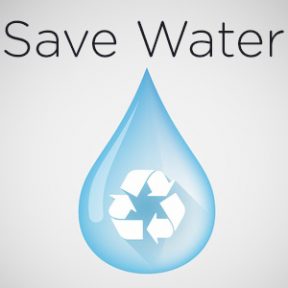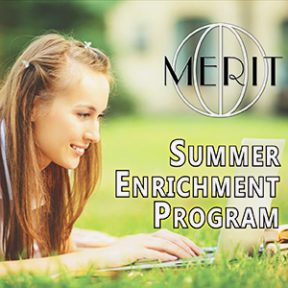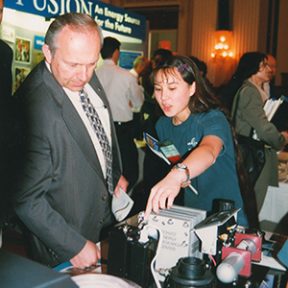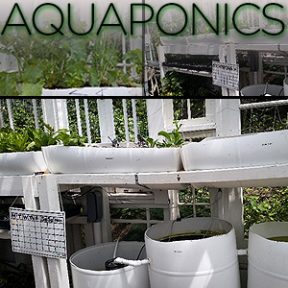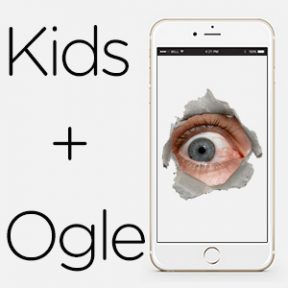 I always thought that growing mushrooms was smelly business.
I always thought that growing mushrooms was smelly business.
There used to be a local mushroom farm down the road and when the wind shifted, the unpleasant smell of manure filled the air. For that reason, I never considered growing mushrooms.
But just 2 weeks ago, I bought a shiitake mushroom kit because it was so easy and convenient. It had a block with mushroom spores placed in a clear plastic bag. All I had to do was snip holes in the plastic to allow air circulation, and that was it.
There was no putrid smell, and the mushrooms grew rapidly. In just 10 days, I harvested a huge bag of beautiful mushrooms.
I sautéed them in butter and garlic, and they were the best mushrooms I’d ever eaten! You can order these mushroom kits at FarWestFungi.com.
I’m taking the plunge and trying a more involved growing environment that uses fresh cut hardwood branches and ¼” mushroom spore plugs. Wish me luck!

 I always thought that growing mushrooms was smelly business.
I always thought that growing mushrooms was smelly business.
There used to be a local mushroom farm down the road and when the wind shifted, the unpleasant smell of manure filled the air. For that reason, I never considered growing mushrooms.
But just 2 weeks ago, I bought a shiitake mushroom kit because it was so easy and convenient. It had a block with mushroom spores placed in a clear plastic bag. All I had to do was snip holes in the plastic to allow air circulation, and that was it.
There was no putrid smell, and the mushrooms grew rapidly. In just 10 days, I harvested a huge bag of beautiful mushrooms.
I sautéed them in butter and garlic, and they were the best mushrooms I’d ever eaten! You can order these mushroom kits at FarWestFungi.com.
I’m taking the plunge and trying a more involved growing environment that uses fresh cut hardwood branches and ¼” mushroom spore plugs. Wish me luck!

 Living in California in one of the worst droughts in history is worrisome. Even though we’ve had a lot of rain this year, it’s all thanks to El Nino.
Living in California in one of the worst droughts in history is worrisome. Even though we’ve had a lot of rain this year, it’s all thanks to El Nino.
Our water tables are low and farmers have pumped so much water that land masses are buckling and surface patches are sinking. Don’t be fooled by seeing rivers and lakes at normal levels this year because the real problem is the vast reservoirs beneath the surface. So what can you do? Use the water from your tap TWICE before it goes down the drain. Here are 2 easy ways to save between 3-6 gallons of water per person each day.
#1: Sinks
Capture the water you run while you’re waiting for the warm water in your tap. In your bathroom, place a plastic tub or bucket under your faucet to catch the water as you brush your teeth and wash your face. In the kitchen, place a pitcher or bucket to catch the water while you wash veggies or rinse dishes.
When the buckets fill up, water plants or fill up buckets in the bathroom to flush toilets later.
#2: Showers
Fill up buckets as you wait for the hot water before showering. Depending on where your hot water heater is located, it may take 1-2 gallons of water before the water is warm enough to step into your shower. Then, as you shower, place a bucket in front of you and one behind you to capture water as you wash your hair. With my long hair, I can fill up 3 buckets of water just to wash my hair!
When I’m done with my shower, I use these buckets to flush the toilet all day and night. I don’t use any domestic water to flush the toilet!
You can buy 1-gallon buckets at a dollar store and create this water-saving system for under $10. So lather up and capture your water. You’ll reduce the water you use and possibly prevent $500 water fines!

 If you’re a parent of a high school student, you’re probably counting the days until the last AP test. Kids are stressed out about taking these standardized tests that they think will make or break their chances of getting into a great college. First of all, colleges now realize the dilemma they’ve caused by encouraging students to take AP classes, and they’re retracting their previous admissions rubrics. What really bothers me about AP courses is how they’re taught and what students do to ensure a score of 4 or 5 (on a scale of 1-5). AP classes instill the antithesis of what education and learning is all about.
If you’re a parent of a high school student, you’re probably counting the days until the last AP test. Kids are stressed out about taking these standardized tests that they think will make or break their chances of getting into a great college. First of all, colleges now realize the dilemma they’ve caused by encouraging students to take AP classes, and they’re retracting their previous admissions rubrics. What really bothers me about AP courses is how they’re taught and what students do to ensure a score of 4 or 5 (on a scale of 1-5). AP classes instill the antithesis of what education and learning is all about.
Teachers require students to memorize textbooks, workbooks, readers, flashcards, and other materials and drill the students starting on the first day of classes in August and continue until late April. The teachers only cover what is expected to be on the test so students don’t have the opportunity to research or engage in interesting discussions about the subject matter. As a matter of fact, students pressure their teachers to stay focused and only teach what they absolutely need to learn. When teachers add interesting stories as a tangent to the core material covered in class, students and their parents actually complain. Huh? It’s really a high-stakes game for everyone. Students need to score high for their college applications and the school evaluates the teachers based on how well the students score on the AP tests.
One of my clients created a formula to memorize the years each US president held office (really?) and then an acronym to memorize the presidents’ party affiliations (does this need to be memorized?). “Good” teachers give extra credit points to students who get 100% on the presidents test. So both teachers and students hyper focus on memorizing names, dates, places, and events. Parents and students love “good” teachers because they organize a fail-proof plan to ensure that the students memorize all of the information and prepare them to answer the multiple-choice questions. They require students to write “AP” essays and memorize terms.
The students neither have time nor interest in learning anything that is not covered on the test. It kind of reminds me of the Chinese education system. With classes of up to 80 students, the teachers only teach concepts that can be drilled and memorized. Students don’t conduct research or do any type of analysis simply because the teachers couldn’t grade it. Teachers don’t ask analytical questions or require students to speculate or solve philosophical, political or social issues. This type of education certainly doesn’t inspire students to create, solve, or imagine.
Our kids need to explore concepts and delve deep into the sciences and humanities. At Merit Academy, our full-time students aren’t allowed to take AP classes because we want them to learn the material without wasting the entire year preparing for a standardized test. The universities appreciate the depth and breadth covered in our Honors courses and our students aren’t penalized for not taking a zillion AP classes. Learning should be fun and interesting. It breaks my heart to hear so many kids tell me they hate English, history, or the sciences. AP classes are destroying curiosity and innovation.
 With so much press about GMOs in our food – even our organic and supposedly “healthy” food — how do we know what’s safe to eat?
With so much press about GMOs in our food – even our organic and supposedly “healthy” food — how do we know what’s safe to eat?
I try to eat as healthy as the next person but keeping up with which fruit has pesticides, and when I should definitely buy organic or when it’s safe to buy non-organic produce is confusing. Organic veggies are really expensive so I’ve been looking for a reliable source. Check out EWG’s recommendations for Buy Organic and Buy Non-Organic.
Sneak Peek: Avocados are the safest!
 Wow, time flies! Can’t believe it’s already May! That means it’s time to start thinking about summer school!
Wow, time flies! Can’t believe it’s already May! That means it’s time to start thinking about summer school!
With summer just around the corner, you might want to organize some summer activities that will engage your child. The summer is the perfect time to build academic skills (you don’t need to compete with homework, after-school sports, clubs, etc). Merit’s Summer Enrichment Program offers one-on-one programs to improve reading comprehension, writing essays, math, and some new fun and interesting electives! Merit also offers SAT/ACT preparation for college-bound students.
Learn more about specific classes and the many ways we can make your child’s summer the turning point in their academic careers!
 After all of our bees took their honey and evacuated the beautiful beehives that we built for them last spring, we were dumbfounded.
After all of our bees took their honey and evacuated the beautiful beehives that we built for them last spring, we were dumbfounded.
It kind of felt like we were abandoned by head-strong teens and made reference to the “ungrateful bees” for not appreciating all of the hard work we put into building their hives, maintaining their food and water, and just taking care of them! But after 8 months, we cleaned the old hives, built new ones, and installed 10,000 bees last week.
By “we,” I mean Rob and John put on their bee suits and transferred the bees from the travel box to our hives.
Meanwhile, Julie and I built the steps down to the hives and watched at a safe distance.
This time around, we were all more comfortable with the bees.

 Back in 1998, Nicole led a team of 8th graders to build a Hydrogen Fuel Cell at Merit Academy.
Back in 1998, Nicole led a team of 8th graders to build a Hydrogen Fuel Cell at Merit Academy.
They were invited to present their 15-cell stack in Washington D.C. before Congress, but they didn’t make it past the security point at the Hart Senate Building because the guards thought the kids’ hydrogen fuel cell was a bomb!
The irony here is that the Dept of Energy financed the entire venture including contracting engineers as subcontractors to help the students build the fuel cell and providing transportation/lodging for the team to travel to Humboldt University and to Washington DC.
The photo above is of Nicole meeting with the bomb squad to demonstrate how a fuel cell works and to show them that it wasn’t a bomb.
The good news: Nicole presented the fuel cell to Congress with her classmates and received a warm welcome and lots of interest!
 When I was a teen, I wish someone would have told me to invest the money I made (a whopping $2.10 per hour) from working at a movie theater in high school. Instead, my big earnings paid for bagels, coffee, and gas for my car (gas cost another whopping $0.35 per gallon). Even though it didn’t seem like I made enough money to invest, I wish I had. Let’s look at the same situation today.
When I was a teen, I wish someone would have told me to invest the money I made (a whopping $2.10 per hour) from working at a movie theater in high school. Instead, my big earnings paid for bagels, coffee, and gas for my car (gas cost another whopping $0.35 per gallon). Even though it didn’t seem like I made enough money to invest, I wish I had. Let’s look at the same situation today.
For teens who are working or plan to get a summer job, they can take their earnings and put it in a Roth IRA. Let’s say that a 14-year old earns $2,000 by the end of the summer and they put it into a Roth IRA. In 50 years (assuming they don’t touch it), their $2,000 can grow to about $65,000! Not bad for a summer job, AND all of that money is tax-free.
Teens can invest up to $5,500 per year in a Roth IRA. Considering shrinking pensions and retirement programs, teens and young adults can set up their own retirement program while they’re still living at home. Most teens who live at home really don’t NEED the money they earn. Besides, they’ll probably just spend it on frivolous things anyway.
Rather than talking to your kids about this, take them to your bank, broker or credit union and let the experts show them how to open an account and explain the benefits. This may be one of the most important financial tips you give your kids.
 My aquaponics system has worked effortlessly for 2 years. Other than cleaning out the tanks twice per year, it’s maintenance free!
My aquaponics system has worked effortlessly for 2 years. Other than cleaning out the tanks twice per year, it’s maintenance free!
I built a system with 4 large media beds on top and 2 large fish tanks and 1 filter tank below. Last year we produced all of the basil we needed to make weekly pesto sauce and kale for our morning smoothies.
This year, we’re growing all of our lettuces, spinach, kale and basil. It’s a great system but ours does take up quite a bit of space in our greenhouse.
For those DIYers who want to build a small system that you can keep in your house or garage, I recommend checking out this blog: blog.shanghaiaquaponics.com to see a variety of simple designs and plans.
 In my opinion, if you have an opinion about something and you want to make it public, then sign your name and stand behind it. PERIOD.
In my opinion, if you have an opinion about something and you want to make it public, then sign your name and stand behind it. PERIOD.
It’s no surprise to me that cyber bullying and hate crimes are popping up on social media apps like Ogle. When cowards have a platform to spread hatred anonymously, trust me, they’ll come out of the woodwork and tarnish people’s reputations. That is exactly what happened at a local high school and seems to be happening across the country.
What is Ogle?
It’s a social media app that high school and college students use anonymously. While the creators of Ogle claim that it is a social place for positive group discussions, they haven’t set up clear rules and policies for unacceptable content. They also suggest that users be 17 or older. Hmm. Most high school students are between the ages of 14 and 18.
Talk to your high school or college kids to see if they use Ogle and how it is received on their campuses. I’m curious to see how this app will vet out. Please share with me your experiences with Ogle.


